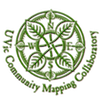Red Huckleberry – Vaccinium parvifolium
Figure 1. Vaccinium parvifolium berry (from http://www.nwplants.com/business/catalog/indexVaccinium.html)
Figure 2. Vaccinium parvifolium shrub (from http://www.centralcoastbiodiversity.org/red-huckleberry-bull-vaccinium-p...)
Common Names:
Red Huckleberry, huckleberry, red whortleberry, red bilberry
First Nations Names:
Sqw’uqwtsus [Stz’uminus Halkomelem]
Family:
Ericaceae
Identification:
Red Huckleberry shrubs can grow to be four meters tall. These shrubs have thin, angular green branches when they are young that become greyish-brown as the shrub matures. After four or five years of root seeding the red huckleberry begins to grow vertically. It has alternate leaves that can grow up to three centimeters long. There are two types of these leaves, the immature evergreen dark green leaves and mature deciduous bright green leaves. Flowers on a red huckleberry shrub begin as green/yellow then turn pink, can be up to 5mm in length, bell shaped, and grow exclusively on the leaf axils. The berries on this shrub are spherical bright red berries that can be up to 10mm in diameter, and are often consumed by woodland creatures and humans.
Cautions:
None.

Figure 3. Line Drawing of Vaccinium parvifolium (from http://linnet.geog.ubc.ca/Atlas/Atlas.aspx?sciname=Vaccinium+parvifolium)
Current Distribution & Local Habitat:
Red huckleberries grow in dry and moist forests, as well as on decaying wood from fallen trees in lowland and mountainous areas. The shrubs are most common in western BC, and less common in southeast BC. The shrubs are shade tolerant and often found on the periphery of coniferous forests and in gaps in the canopy. It is often found near pine, cypress, oak, spruce, fir, arbutus, and birch trees.
Locally, red huckleberry shrubs can be found in the South Woods, Mystic Vale, Bowker Creek, and near the UVIC campus on PKOLS. The shrubs flower in April-June and berries are ready to be harvested in mid-July to mid-August.
Ethnobotanical Uses:
Red huckleberries were eaten fresh by indigenous people wherever they grew. The berries were also used as bait in fishing due to their resemblance of salmon eggs. Since contact, settlers and their descendants have also enjoyed these berries as a snack on the trail. The leaves of this shrub were sometimes mixed with bark and made into a decoction to cure sore throats and enflamed gums. The berries were often juiced, dried, smoked and stored for winter consumption. Many woodland creatures aid in the seed dispersal of red huckleberry through heavy grazing. The long shafts of mature shrubs and their attached slender branches can also function as a broom. View presentation of how to make beer with red huckleberies here.
Written by Bailey McLeod
References:
First Voices. 2017. Stz’uminus. Retrieved November 20 2017 (http://www.firstvoices.com/en/stzuminus/word-query-results?q=red+huckleb...)
VanNatta Herbarium. 2012. Red Huckleberry. Retrieved November 21 2017 (http://www.vannattabros.com/plant4.html)
Holm, Freya G. 2004. The Natural History of Vaccinium parvifolium Smith, the Red Huckleberry. Retrieved November 23 2017 (http://academic.evergreen.edu/projects/evergreenbiota/kingdom/plantae/ph...
E-Flora BC. 2017. Vaccinium parvifolium Sm.: red huckleberry. From The Electronic Atlas of the Flora of British Columbia. Retrieved November 24 2017 (http://linnet.geog.ubc.ca/Atlas/Atlas.aspx?sciname=Vaccinium+parvifolium)
Native Plants PNW website. 2016. Red Huckleberry, Vaccinium parvifolium. Retrieved November 25 2017 (http://nativeplantspnw.com/red-huckleberry-vaccinium-parvifolium/)
Plants For A Future. 2012. Vaccinium parvifolium – Sm. Retrieved November 24 2017 (http://www.pfaf.org/user/Plant.aspx?LatinName=Vaccinium+parvifolium)
